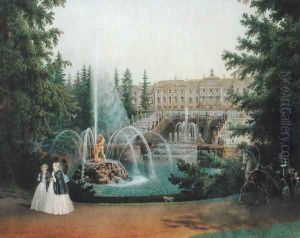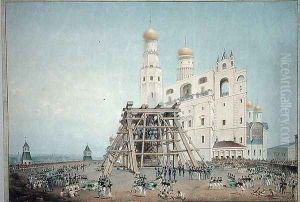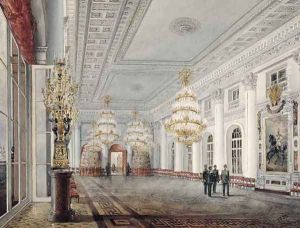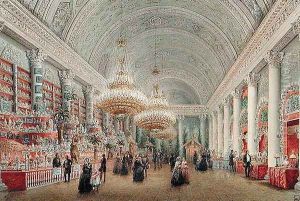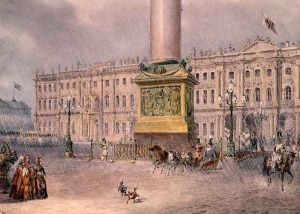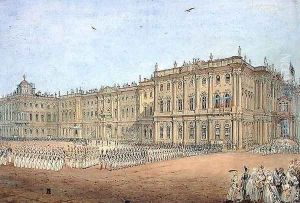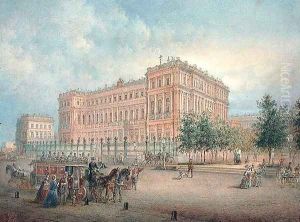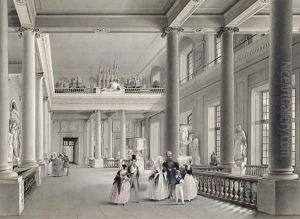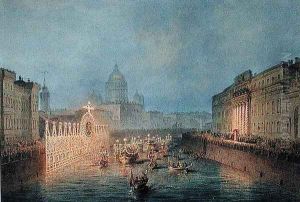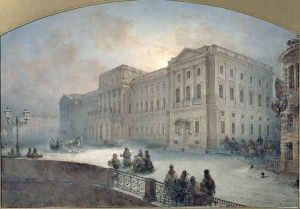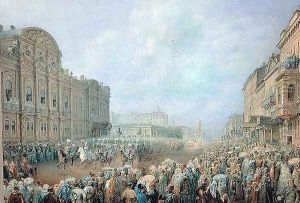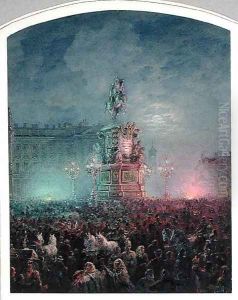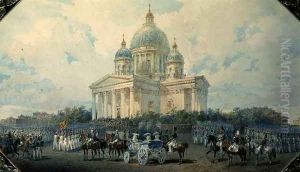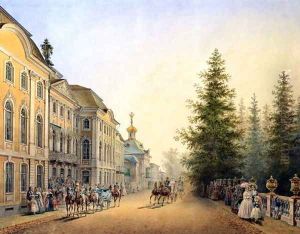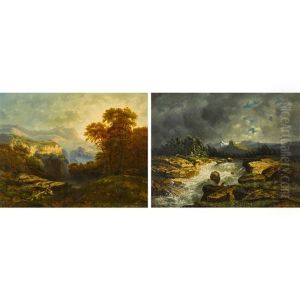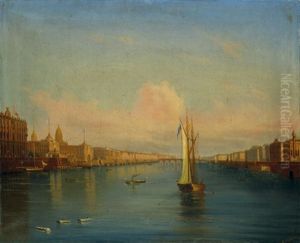Vasili Semenovich Sadovnikov Paintings
Vasili Semenovich Sadovnikov was a prominent Russian painter, primarily recognized for his mastery in watercolors and his significant contributions to the art of cityscape painting during the 19th century. Born into a family with a strong artistic lineage, Sadovnikov's early exposure to art and architecture played a crucial role in shaping his artistic path. His most notable mentor was Maxim Vorobiev, a distinguished landscape painter of the time, under whose guidance Sadovnikov honed his skills and developed a keen eye for detail and atmosphere.
Sadovnikov's work is largely characterized by its meticulous attention to architectural accuracy, combined with a nuanced understanding of light and atmosphere. He was particularly fascinated by the urban landscapes of Saint Petersburg, which became the central theme of much of his work. Through his paintings, Sadovnikov captured the architectural grandeur and the everyday life of the city with a realism and immediacy that was unparalleled among his contemporaries.
During his lifetime, Sadovnikov also engaged in teaching, passing on his knowledge and skills to the next generation of artists. He played a significant role in the development of Russian watercolor painting, pushing the boundaries of the medium and exploring its potential for capturing the transient effects of light and weather on the urban environment.
Despite his contributions to Russian art, Sadovnikov's work was not widely recognized outside of Russia until after his death. However, in recent years, there has been a growing appreciation for his art, with exhibitions and research highlighting his role in the evolution of landscape and cityscape painting in the 19th century. Sadovnikov's paintings are now celebrated for their historical value and their exquisite portrayal of 19th-century Saint Petersburg, offering a window into the past of one of Russia's most iconic cities.
